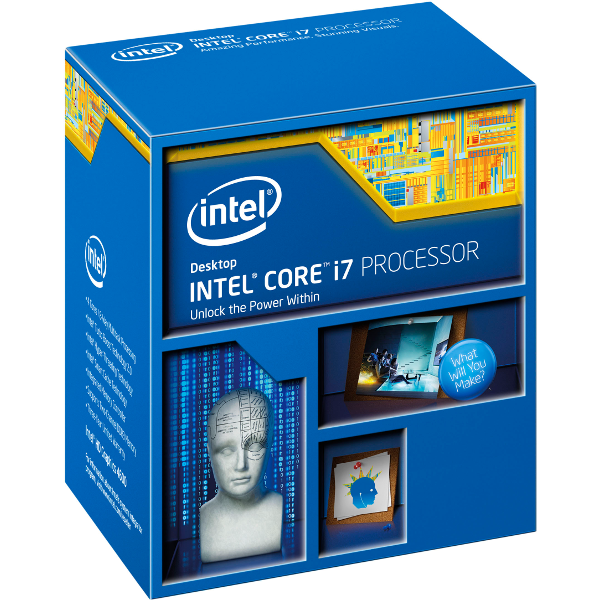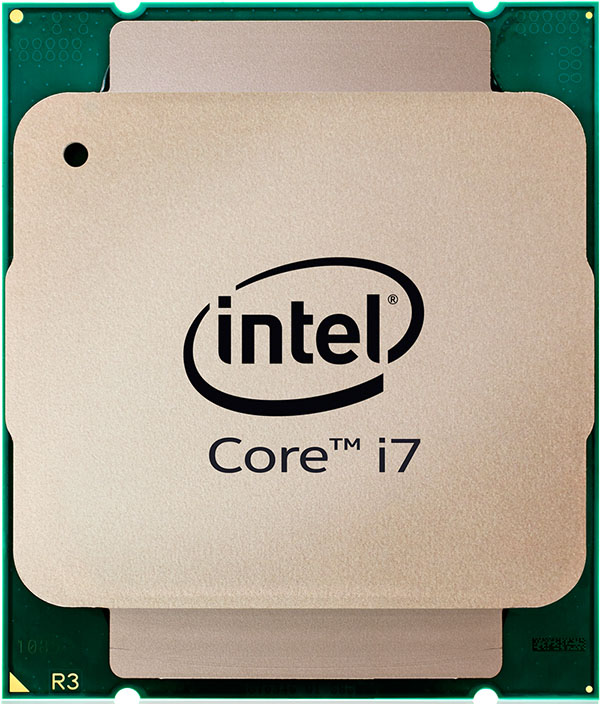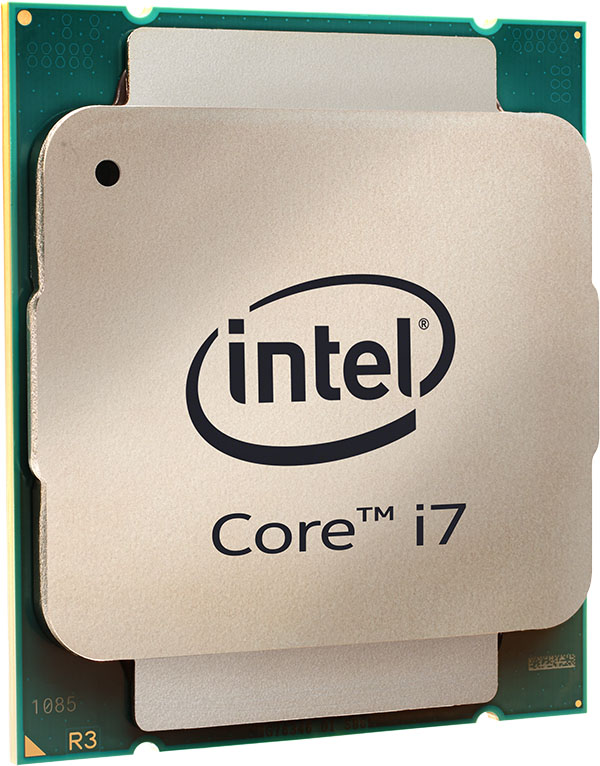Intel Core i7-5960X, -5930K And -5820K CPU Review: Haswell-E Rises
Three New CPUs For Enthusiasts
Editor’s Note: Eager to show off what it's doing with Intel’s Haswell-E architecture, system builder CyberPower PC is offering the Tom’s Hardware audience an opportunity to win a complete system based on Intel’s Core i7-5820K processor. Read through our review, and then check out the last page for more information on the configuration, plus a link to enter our giveaway!
A little more than 10 years ago, Intel introduced the Pentium 4 Extreme Edition 3.4 GHz. It boasted one Hyper-Threaded core, 512 KB of L2 cache, a 2 MB L3 cache, and a quad-pumped 800 MHz front-side bus. Haven't seen that term in a while, have you? Back then, the Pentium was manufactured at 130 nm and composed of 178 million transistors. Intel sold the thing for $1000, dropped it into the now-ancient Socket 478 interface, and gave the chip a thermal ceiling just over 100 W.
None of us could have guessed that, a decade later, Intel’s cutting-edge flagship would sport a lower base clock rate, accelerating to 3.5 GHz only in situations when thermal headroom allows. And yet, that’s exactly where the new Core i7-5960X lands. Of course, the difference is we’re dealing with an immensely more sophisticated piece of technology, and the world now knows frequency isn’t always the answer to improving performance.
The Core i7-5960X plays host to eight physical cores able to work on 16 threads concurrently by virtue of Hyper-Threading. So, applications optimized to break tasks into pieces are sped up through parallelism. Each core has its own 32 KB L1 instruction and data caches, along with 256 KB of L2 space. A massive 20 MB of L3 cache is shared between them, working out to the magical 2.5 MB per core Intel’s architects aim for.
And while 2004’s Extreme Edition handled host processing duties exclusively, 2014’s integrates a lot more functionality. The -5960X has its own on-die PCI Express controller, exposing up to 40 lanes at 8 GT/s (that’s official PCI Express 3.0 support). It’s also armed with the world’s first quad-channel DDR4 memory controller, officially rated for data rates as high as 2133 MT/s out of the gate.
In-Depth Reading
If you’d like to learn more about Intel’s Haswell architecture, which is the foundation for every core in a Haswell-E-based CPU, please check out The Core i7-4770K Review: Haswell Is Faster; Desktop Enthusiasts Yawn
Get Tom's Hardware's best news and in-depth reviews, straight to your inbox.
Drilling down a bit deeper, the -5960X centers on Intel’s modern Haswell architecture. However, because this is the server/workstation-oriented version, it’s referred to as Haswell-E. You get the additional PCIe connectivity (Haswell-based desktop CPUs only come equipped with 16 lanes) and aforementioned memory controller (existing Haswell processors are limited to two channels of DDR3 support), but lose the on-die HD Graphics engine featured so prominently back when those fourth-gen Core CPUs launched.
Intel rightly assumes that anyone buying a powerful workstation or gaming box will install discrete graphics cards. Rather than eating into the transistor budget with a built-in GPU, all available resources are thrown into creating a more capable host processor.
Despite this smart accounting, the Haswell-E die still measures more than 355 mm² and is composed of 2.6 billion transistors—nearly 15x the Pentium 4 Extreme Edition’s count. It’s manufactured using Intel’s 22 nm node and specified for a 140 W TDP. Expect to see the CPU surface immediately at a familiar $1000 price point.
Core i7-5930K And Core i7-5820K
Any time we test one of Intel’s thousand-dollar showpieces, we acknowledge its gravitas, all the while contending that most enthusiasts prefer to spend less and lean on their technical acumen to maximize performance through overclocking. In the case of Haswell-E, only the Core i7-5960X is an eight-core model. Buying one of the lesser models means cutting a couple of cores and some cache, at least.
Fortunately, games typically don’t penalize you for dropping from eight to six cores, particularly when you’re running on Intel’s efficient architectures, and doubly so when frequency increases at the same time. As a result, the Core i7-5930K is a better candidate for gamers with money to spend on ultra-high-end hardware. It’s based on the same physical die as the -5960X. Intel simply disables two cores and 5 MB of shared L3. What remains is six cores, 15 MB of last-level cache, all 40 lanes of PCI Express 3.0, and the quad-channel memory controller. Base clock rate jumps to 3.5 GHz, while the peak frequency, controlled by Turbo Boost technology, increases to 3.7 GHz. The Core i7-5930K is priced at $583, potentially "saving" you more than $400.
If that’s still a little rich, the Core i7-5820K lands at a palatable $389. It too is a six-core chip with 15 MB of shared L3 and a four-channel DDR4 controller. However, Intel lops off some of the PCI Express, exposing 28 lanes instead of 40. Frankly, that’s not a particularly painful wound. It leaves lots of room for single-, dual-, and even triple-card graphics configurations, so long as AMD and Nvidia certify x8/x8/x8 arrays. The official word from Intel is that the -5820K supports bifurcation of its lanes into that arrangement; however, the breakdown has to be enabled at the motherboard level.
The Core i7-5820K does lose some frequency compared to the -5930K: its base clock rate is 3.3 GHz, while Turbo Boost accelerates as high as 3.6 GHz.
Core i7-5000 Series Turbo Boost Clock Rates



An Enthusiast-Friendly Trio
Still, all three of the models we’re testing are either Extreme Edition or K-series parts, meaning they feature unlocked multipliers and can be overclocked much more freely than most of Intel’s mainstream Haswell-based processors.
Even better, Intel uses solder as an interface material between its Haswell-E die and the large heat spreader covering these Core i7-5000-series CPUs. That’s in contrast to the lower-end Haswell parts, which utilize a less effective thermal compound. Even in our own lab, those dies topped with paste heat up quickly, limiting the amount of voltage we can put through them with air or liquid cooling. A solder-based interface material facilitates faster heat transfer, potentially raising the ceiling on what we can coax from Haswell-E.
It goes without saying, then, that the companies selling high-end hardware are excited about Core i7-5960X and its derivatives. We have big air coolers like Noctua’s NH-D15 in the lab, along with closed-loop systems like Intel’s own BXRTS2011LC. Memory maker G.Skill seeded us with DDR4-3000 modules rated for CAS 15 timings. ASRock and MSI armed me with a handful of impressive-looking motherboards for today’s launch, while Thomas works on our first round-up of LGA 2011-3 boards from every relevant player.
Wait, what? LGA 2011-3? Ah, yes—there’s a new platform in play, too.
Current page: Three New CPUs For Enthusiasts
Next Page X99, LGA 2011-3 and DDR4: Get Ready For A Big Upgrade-
B4vB5 Chris and Igor @ TomsHW,Reply
Bit disappointed to not see a comparison with the Xeon E5-1650v2(or 1660v2), as the 2600 is a bit overkill comparing prices. Some of us just need a workstation with ECC ram and not just a free-for-all(ie someone else is paying) Xeon 2600 fest. -
JamesSneed Out of curiosity why were so many of the gaming tests only done at 2560x1440? Seems like you would be more GPU bound at this resolution. I'm not sure it really matters but I do like gaming at 1080p for the very high frame rates was curious if these would push frame rates higher. Otherwise nice review.Reply -
ohim Reply14063555 said:Affordable 8-cores from Intel are finally coming. Awesome.
1000$ is affordable to you ? :))
14063653 said:Out of curiosity why were so many of the gaming tests only done at 2560x1440? Seems like you would be more GPU bound at this resolution. I'm not sure it really matters but I do like gaming at 1080p for the very high frame rates was curious if these would push frame rates higher. Otherwise nice review.
Though you have a point here, the guy buying such CPUs most likely will game at above 1080p .. but this would have implied using 2 GPUs at least in the test. -
chiefpiggy Why do they call these their "5th generation" of Intel core processors if they're refreshes of the Haswell processors? I get that they have revolutionary technology within but with the release of broadwell so soon I doubt that anyone would buy these processors..Reply -
envy14tpe I need this system to play Minecraft. with that aside, Intel finally has made a jump in i7s value and performance.Reply -
srap "Single-threaded software is so last decade, though."Reply
I have a hunch that we will never see anything like this in the comment sections of AMD reviews. Not sure why :D -
CaptainTom Yeah the real winner of a cpu here is definitely the 5820K. If I were building now, that is what I would use.Reply




